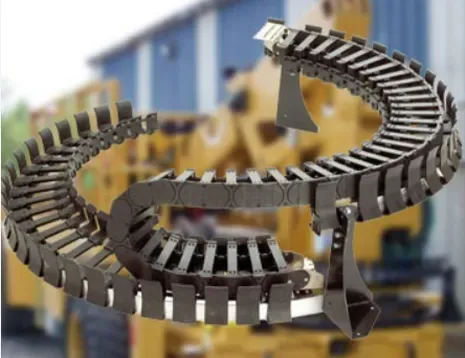drag chain
Understanding Drag Chains A Comprehensive Overview
In modern industrial settings, the efficiency and organization of machinery play a crucial role in productivity. One often-overlooked yet vital component in this equation is the drag chain, also known as a cable carrier or energy chain. Drag chains serve as protective conduits for cables, hoses, and other components that require movement and flexibility in various applications. This article delves into the fundamentals of drag chains, their applications, benefits, and considerations when selecting the right type for specific tasks.
What Is a Drag Chain?
A drag chain is a flexible and modular system designed to manage and protect a range of moving components, primarily cables and hoses. These structures are typically constructed from materials such as plastic or metal and consist of interconnected links that allow for smooth movement along a predetermined path. The primary function of a drag chain is to ensure that the cables and hoses remain organized and free from wear and tear, which can significantly extend their lifespan.
Applications of Drag Chains
Drag chains are widely used across various industries, including but not limited to automotive, robotics, automation, and manufacturing. They find applications in
1. CNC Machines In the realm of manufacturing, CNC machines utilize drag chains to protect and organize the numerous cables that control the machine's operations. This prevents tangling and ensures smooth movement along the axes.
2. Robotics In robotic arms and automated systems, drag chains help in managing power and signal cables, allowing for full range of motion without the risk of cable damage.
3. Material Handling Equipment Conveyor systems often utilize drag chains to manage electrical cords, pneumatic hoses, and data lines, maintaining a clean and safe working environment.
4. Elevators and Lifts Drag chains help in guiding cables within elevators, ensuring that they do not snag or break during operation.
Benefits of Using Drag Chains
The implementation of drag chains in machinery and equipment comes with numerous advantages
drag chain

1. Protection One of the primary benefits is the protection they offer to cables and hoses, reducing wear caused by friction, abrasion, and external factors.
2. Organization Drag chains help in organizing cables and hoses, thus minimizing clutter in the workspace. This can lead to improved safety and efficiency.
3. Flexibility The modular design of drag chains allows for easy customization to fit various applications. They can be configured to different lengths and shapes based on the specific needs of the equipment.
4. Ease of Maintenance By keeping cables organized and protected, drag chains make inspection and maintenance easier. Faulty components can be identified quickly without the need to untangle or remove numerous cables.
5. Cost-Effectiveness While the initial investment may seem significant, the long-term savings associated with reduced cable wear and the prevention of downtime can make drag chains a cost-effective solution.
Considerations When Selecting Drag Chains
When selecting a drag chain for your application, several factors should be taken into account
1. Load Capacity Ensure that the drag chain can support the weight of the cables or hoses it will carry. Overloading can lead to premature wear or failure.
2. Movement Characteristics Consider the type of motion (linear, rotary, etc.) the drag chain will experience and choose one that accommodates those movements.
3. Environmental Conditions The operating environment (temperature, exposure to chemicals, etc.) will influence the material selection for the drag chain. Some materials are better suited for harsh conditions than others.
4. Installation Space Evaluate the installation area to choose a drag chain that fits within the available space while still allowing for adequate movement.
In conclusion, drag chains are an indispensable component in many industrial applications. By providing protection, organization, and flexibility, they enhance the efficiency and longevity of machinery and equipment. Understanding their various applications, benefits, and selection criteria can help industries optimize their operations and maintain a safe working environment.








